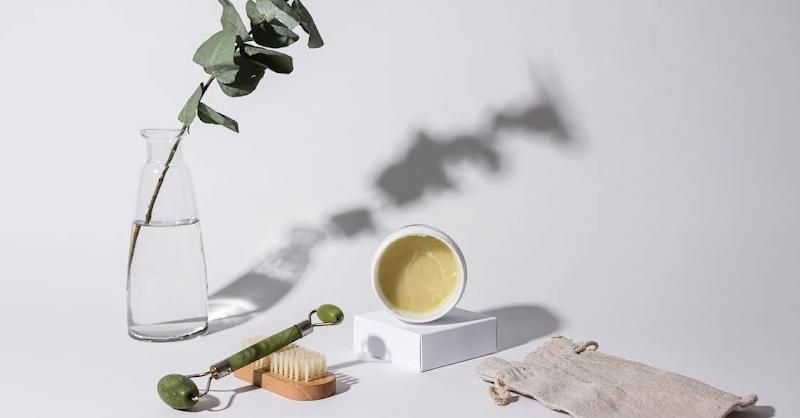No matter where you live, many people want to have healthy, youthful-looking skin. Each region offers unique techniques with cultural practices and local ingredients. Today, we will go over some of these practices, presenting skincare rituals that show the diversity and wisdom found in various cultures around the world we live in.
1. Japan – Double Cleansing
In Japan, double cleansing is an important part of many skincare routines. The process starts with an oil-based cleanser to remove any makeup, dirt, or impurities. A water-based cleanser then follows it to get down deep in the skin and clean pores. This method ensures a thorough cleanse, leaving the skin clean and ready for further skincare steps.
2. Korea – 10-Step Routine
Korea has revolutionized skincare with its famous 10-step routine. The elaborate regimen focuses on layering products such as toners, serums, and moisturizers to help achieve beautiful, healthy skin. While it may seem like a significant undertaking, each step serves a great purpose and can promote long-term skin health.
The ten step routine includes:
- Oil cleanser
- Water or Foam cleanser
- Exfoliator
- Toner
- Essence
- Serum
- Mask
- Eye Cream
- Moisturizer
- SPF in the Morning and rich night cream at night
Note that steps can be skipped if they are unsuitable for your skin type.
3. France – Micellar Water
The French are known for their minimalist approach to beauty. Micellar water is and has been a staple in their skincare routine since the early 1900’s. This gentle liquid contains mild surfactants that attract dirt and oil, making it an effective yet soothing cleanser. It’s particularly loved for its ability to cleanse the skin without stripping it of its natural oils.
To use, you simply soak a towel or cotton pad and swipe it across your face. Micellar water can be used before or after cleansing your skin.
4. India – Turmeric
In India, turmeric is not just a spice known for cooking food – it is also a skincare ingredient. Its anti-inflammatory and antibacterial properties make it great for fighting any acne or redness. It also helps with brightening the complexion.
A popular homemade mask involves mixing turmeric with honey and yogurt, creating a paste you can use as a 5 to 10-minute mask that revitalizes the skin.
5. Morocco – Argan Oil
Argan oil is a beauty-boosting ingredient originating in Morocco. Extracted from the kernels of the Argan tree, it is very rich in Vitamin E and fatty acids, making it perfect for moisturizing the skin and hair. The antioxidants it contains may help fight aging. Its versatility and nourishing properties have gained worldwide popularity, and you can find this ingredient in many skincare and hair care products.
6. Australia – Tea Tree Oil
Australia has given the world the powerful tea tree oil, which is derived from the tea tree. Tea tree oil is known for its antiseptic properties, making it a good option for acne-prone skin due to its ability to combat bacteria and reduce inflammation. Tea tree oil can be a potent spot treatment for blemishes on the skin. It should be diluted with a carrier oil such as coconut oil and not just used straight to avoid skin irritation.
Scandinavians swear by the benefits of cold water for the skin. Splashing the face with cold water or ice rollers may help boost circulation, reduce puffiness and inflammation, and tighten the pores. This practice may also help enhance the skin’s radiance and resilience against harsh climates. You can also simply cleanse the face with cold water to take advantage of these benefits.
8. Greece – Olive Oil
Olive oil is an essential component of Greek skincare. This ingredient is acknowledged for its anti-aging and hydrating properties. You can use olive oil in many ways for beauty, including as a moisturizer, makeup remover, and even for hair masks. Its rich content of vitamins and antioxidants makes it a nourishing choice for overall skin health.
9. China – Jade Rolling
Jade rollers have been a part of Chinese beauty rituals for centuries. Rolling the smooth jade stone across the face helps improve circulation, reduce puffiness, and promotes lymphatic drainage. It’s a calming practice that also aids in the deeper penetration of skincare products. Many choose to roll on added skincare ingredients such as serums or moisturizers. As an added benefit, put your jade roller in the fridge or freezer to make it cold.
10. Middle East – Rose Water
In the Middle East, rose water is a beloved skincare ingredient. Rose water is made from rose petals that are heated up with water, which essentially steams the petals and extracts its beneficial components. Used as a toner, it helps balance the skin’s pH. Rose water may also help reduce redness and contains potent anti-inflammatory and antioxidant properties.
11. Africa – Shea Butter
Shea butter is derived from the nuts of the Shea trees in Africa. Deeply moisturizing and rich in vitamins A and E, shea butter is popular for treating dry skin, eczema, and even minor burns. Its ability to promote skin elasticity and provide essential fatty acids that can combat anti-aging makes it a cherished skincare ingredient.
Conclusion
The world of skincare is as diverse as the cultures it may stem from. Each culture offers unique insights and ingredients that offer a wide range of benefits. In addition to the ingredients we have discussed, you can also consider exosome IV therapy to help promote healthy and radiant skin. By incorporating these ingredients into your daily skincare routines, you not only take care of your skin but also celebrate the wide beauty rituals that span our globe.

